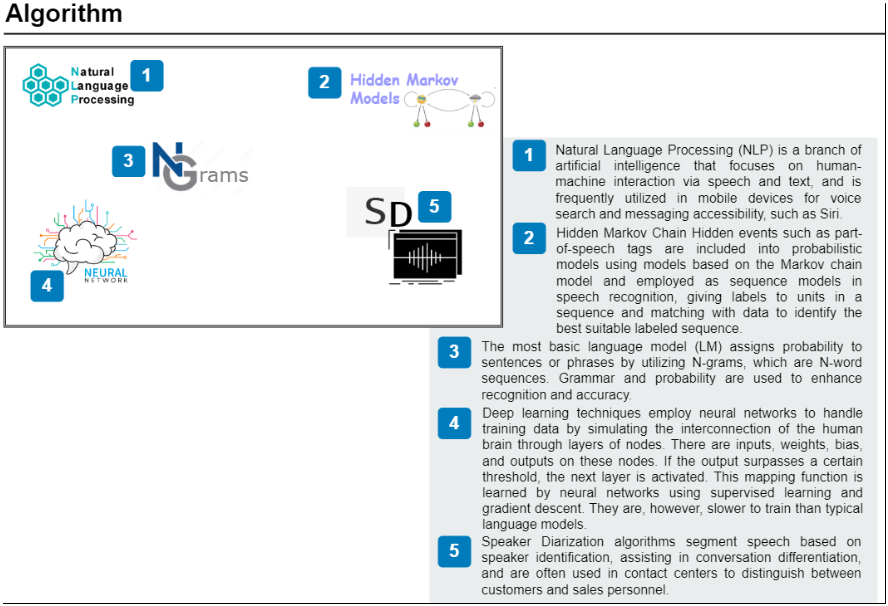Speech Recognition
Speech recognition, commonly referred to as automated speech recognition (ASR), computer speech recognition, or speech-to-text, is a software that translates human speech in a form of text. It is sometimes mistaken with voice recognition, which concentrates on recognizing a specific user’s voice.

Speech recognition is a broad field of computer science that encompasses linguistics, mathematics, and statistics. Speech input, feature extraction, feature vectors, a decoder, and word output are all part of it. To identify the right results, the decoder employs acoustic designs, a pronunciation dictionary, and language models. It’s an important part of current technology that employs a variety of algorithms and calculation approaches to increase transcription accuracy.
The accuracy rate, i.e. word error rate (WER), and speed of speech recognition technology are measured. Pronunciation, accent, pitch, loudness, and other sounds are all characteristics that might influence word mistake rate. Speech recognition technology has long sought to achieve human parity, or an error rate comparable to that achieved by two humans speaking.
Which are the effective speech recognition features?
There are several voice recognition software and devices on hand, but the most modern ones are AI and machine learning. To interpret and analyze human speech, they incorporate grammar, syntax, structure, and composition of audio and voice signals. They should ideally learn as they go, changing replies with each engagement.
High-quality solutions enable businesses to personalize and adapt technology to their unique requirements, including language, voice characteristics, and brand recognition.
Speech recognition examples:
| Features | Effects |
| Language Weighting | Increase accuracy by emphasizing commonly uttered words (such as product names or industry jargon) in addition to terms already in the basic vocabulary. |
| Speakers labeling | Produce a transcription of a multi-participant discussion that references or labels the speaker’s contributions individually. |
| Acoustic Training | Pay attention to the acoustics of the company. Develop the system to adjust to an acoustic environment (such as call center ambient noise) and speaker characteristics (such as voice pitch, loudness, and tempo). |
| Profanity Filtering | Filter out certain words or phrases to assure that voice output is sanitized. |
Speech Recognition use cases
Speech technology is employed in a wide range of sectors, including automotive, technology, healthcare, sales, and security.
- By providing voice-activated navigation systems and search capabilities in vehicle radios, speech recognizers increase driving safety.
- Virtual agents are becoming more prevalent in everyday life. They’re especially prevalent on mobile devices, where they use voice commands to do activities such as voice search and music playing.
- Dictation programs are used by doctors and nurses to record and track patient diagnoses and treatment records.
- Speech recognition systems may assist call centers in transcribing phone calls, and AI chatbots can answer frequently asked questions, decreasing the time it takes to resolve consumer concerns.
- As tech becomes more prevalent in everyday life, voice-based authentication provides an additional layer of protection.
General voice-recognition technologies incorporate both automated and human processes driven by machine learning. Humans perform key roles in data collection, annotation, validation, and fine-tuning, assuring the ASR system’s high level of precision and accuracy. Because the invention has vast potential in sectors such as voice assistants, transcription services, and accessibility aids, it is a field that is always evolving and improving.